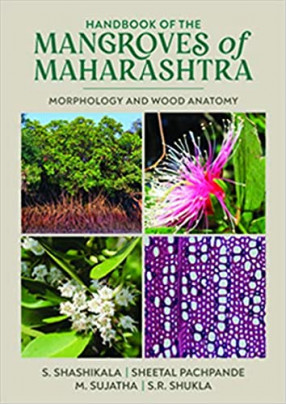Handbook of the Mangroves of Maharashtra: Morphology and Wood Anatomy
Mangroves are specialised trees that grow in the interface between ocean and the land. They form the skin along the coastline that protects the coastal areas from erosion, hurricanes, cyclones and many other natural calamities that arise from the sea. Globally, mangroves comprise only 80 different species that grow in saline habitats. Apart from protecting coast line, from erosion, hurricanes, cyclones mangroves offer enormous tangible and intangible services to human kind by providing livelihoods in the form of fishing and tourism for local communities, sequestration of carbon in mangrove sediments, balancing the food chain etc. Despite of all these they face challenges for survival due to various threats that arise due to increasing urbanisation. Among the current threats to mangrove ecosystems are cyclones, storms and floods as natural threats and anthropological interference such as encroachments for dwelling, aquaculture and other livelihood purposes. Mangroves exhibit a variety of adaptations viz. morphology, anatomy, physiology, seed and seedlings development and succession mechanisms. Maharashtra comprises about seventeen species of true mangroves and few associates, widely distributed throughout the coastal districts. Mangroves in Maharashtra are protected under forest laws, despite this sometimes they are destroyed and illegally transported to various locations. At present, many publications are available on the ecology, morphology and taxonomy of mangroves, but the information on wood anatomy is very scarce. Thus a need was felt to generate the data which will help the decision makers in analysing the illegally cut wood source. This will also be crucial in conservation of mangroves. Therefore, a research project was undertaken by Institute of Wood Science and Technology (IWST), Bangalore to study the wood anatomy of seventeen mangrove species grown along the coastline of Maharashtra. The data so obtained from the study is compiled along with morphological features of each species and is being published in the form of this book and will be highly beneficial tool in understanding and identifying the source of wood that belongs to mangrove species. The present contribution will help to identify a mangrove species both in the field and laboratory based on morphology and wood anatomy.
Get it now and save 10%
BECOME A MEMBER







Bibliographic information
S R Shukla
S Shashikala